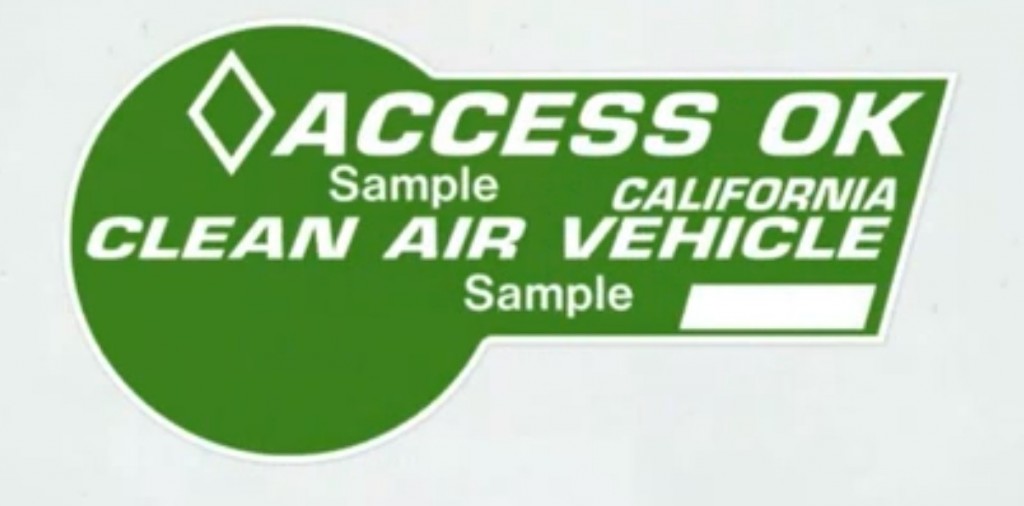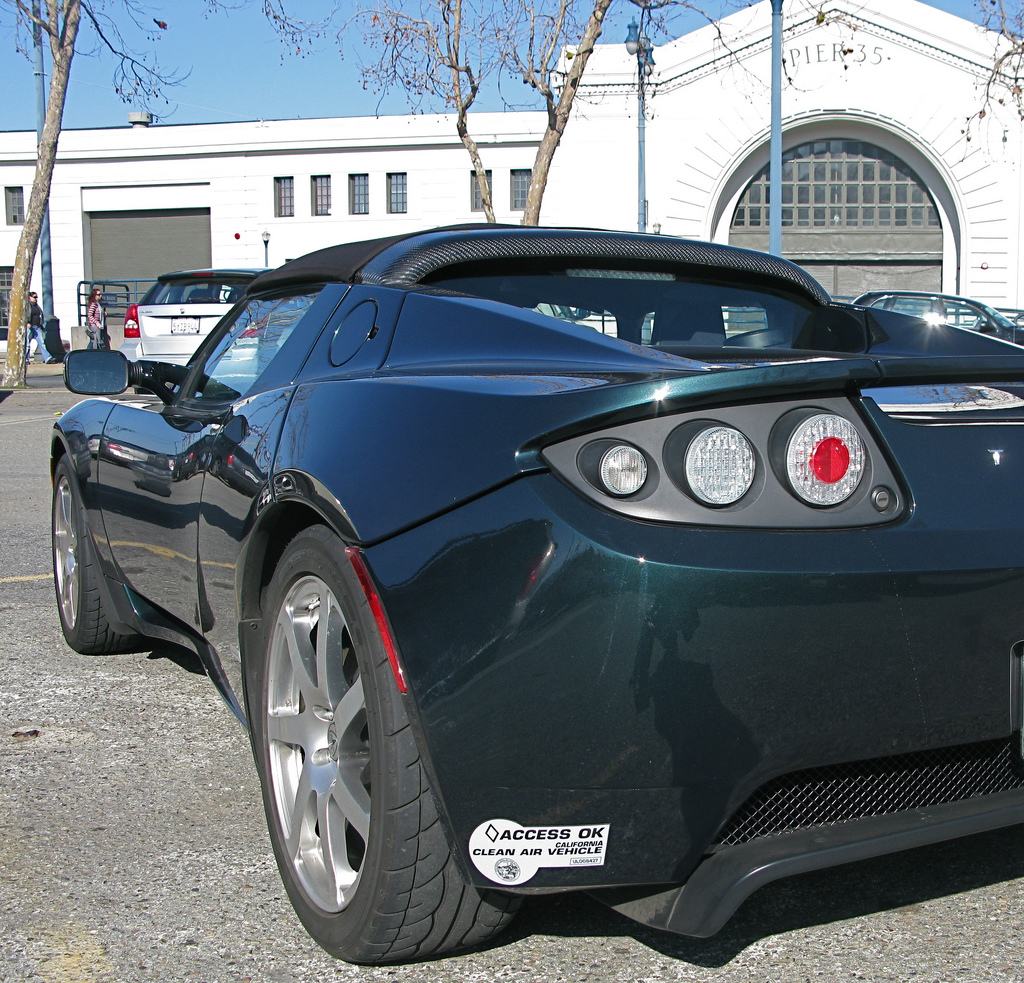Access to carpool lanes on California's legendarily crowded freeways is a big perk.
So is getting a check in the mail that cuts the purchase cost.
These incentives were successful in spurring sales of hybrids years ago, and they've helped sales of modern battery-electric and plug-in hybrid cars since the first ones were sold in 2010.
DON'T MISS: Memo To TV News Shows: Tesla Electric Cars Don't Make Engine Noises
But now the stickers for plug-in hybrids have essentially run out--only 40,000 were authorized--although battery-electric cars are still fine.
Apply now, cash this fall
At the same time, funds for the state's purchase rebates have run out as well. Buyers get a check from the state of $2,500 for zero-emission vehicles, or $1,500 for plug-in hybrids.

Green HOV-Lane Sticker
It's widely expected that more funding will be allocated for the plug-in purchase rebates, officially known as the Clean Vehicle Rebate Project, though perhaps not until late summer or autumn.
The California Center for Sustainable Energy, which administers the program, is now advising plug-in buyers that if they applied for their rebates on or after March 28, they will receive their rebate checks in September.
The state's Air Resources Board expects that it will need $30 million to cover all new rebate applications between now and June 30, the end of California's fiscal year.
The waiting list for new buyers had enough space for $5 million of rebates--roughly one month's worth--and it's seeking authority to increase the list by another $25 million $5 million.
All buyers must apply for the rebates within six months of purchasing an eligible vehicle.
(The state purchase rebates are different from the Federal income-tax credit for purchase of a plug-in electric car, ranging from $2,500 to $7,500, which is unaffected by the events in California.)

Tesla Roadster with CA Clean Air Vehicle sticker -- flickr user jurvetson
White stickers vs green
As for the carpool-lane stickers, buyers of battery-electric cars and crossovers (as well as natural-gas and hydrogen fuel-cell vehicles) continue to receive white stickers, of which the supply is unlimited.
Buyers of plug-in hybrids--the Toyota Prius Plug-In Hybrid and Ford's two Energi models, the C-Max and Fusion, are the highest-selling--and the range-extended electric Chevrolet Volt receive a green sticker, however.
And they're out of luck; the last sticker was likely issued by the agency sometime this week.
The Air Resources Board updated its eligibility page as follows:
As of March 28, 2014, 38,179 "green" stickers have been issued. Green stickers are valid through January 1, 2019.
More to come?
Anecdotal reports indicate that stickers with serial numbers above 39,000 have now been issued, so for all intents and purposes, they're gone.
Assemblyman Al Muratsuchi, who has introduced other bills supporting plug-in electric cars, has introduced a bill to authorize an additional 45,000 green carpool-lane stickers.
That would bring the total to 85,000, which is the same total as the old yellow stickers that used to give three high-mileage hybrids access to the lanes before those stickers were retired on June 30, 2011.
Electric-car advocates will be watching to see what effect the end of carpool-lane access, even if it proves to be temporary, will have on sales of plug-in hybrids in California.
_______________________________________________













